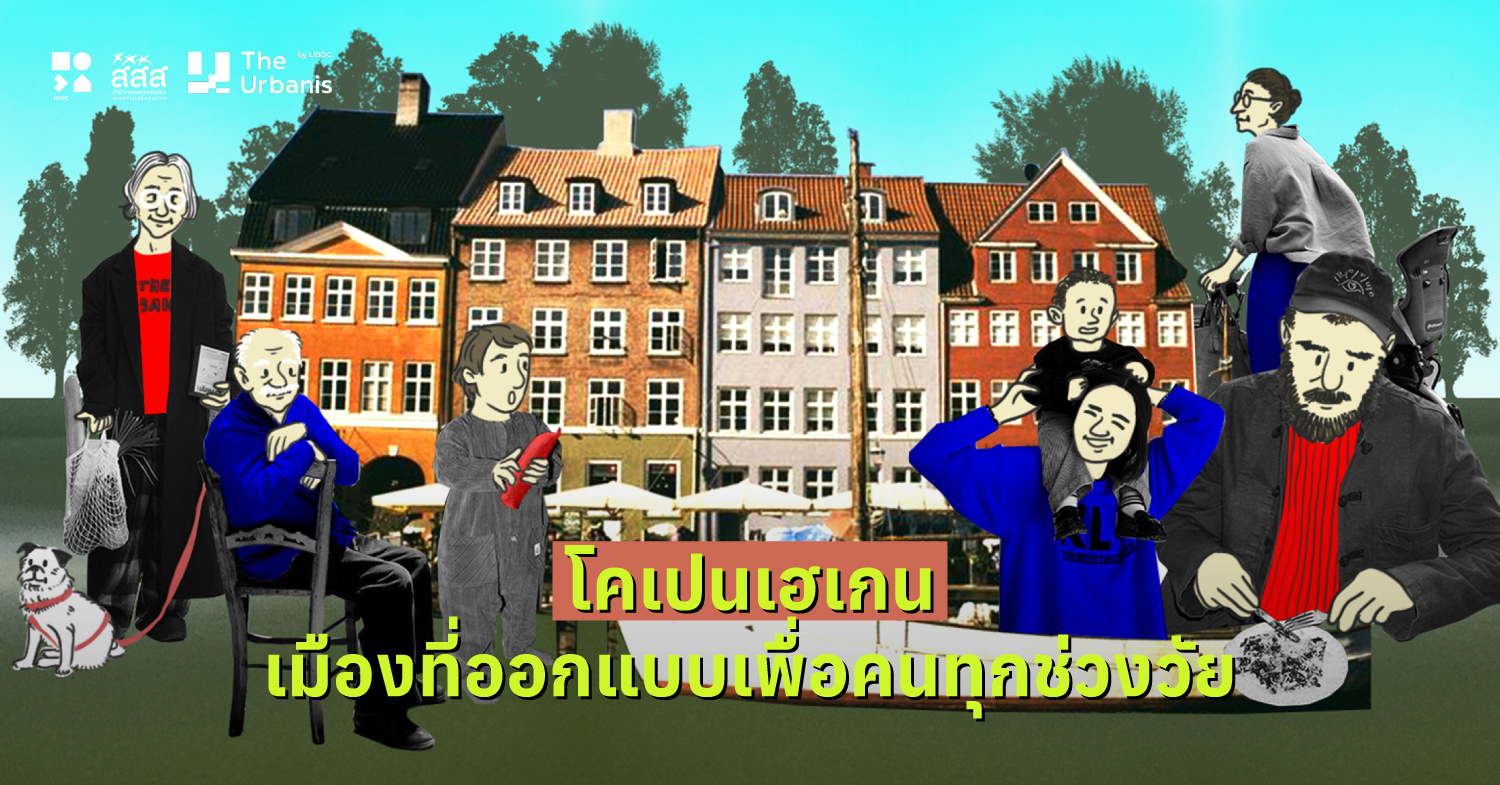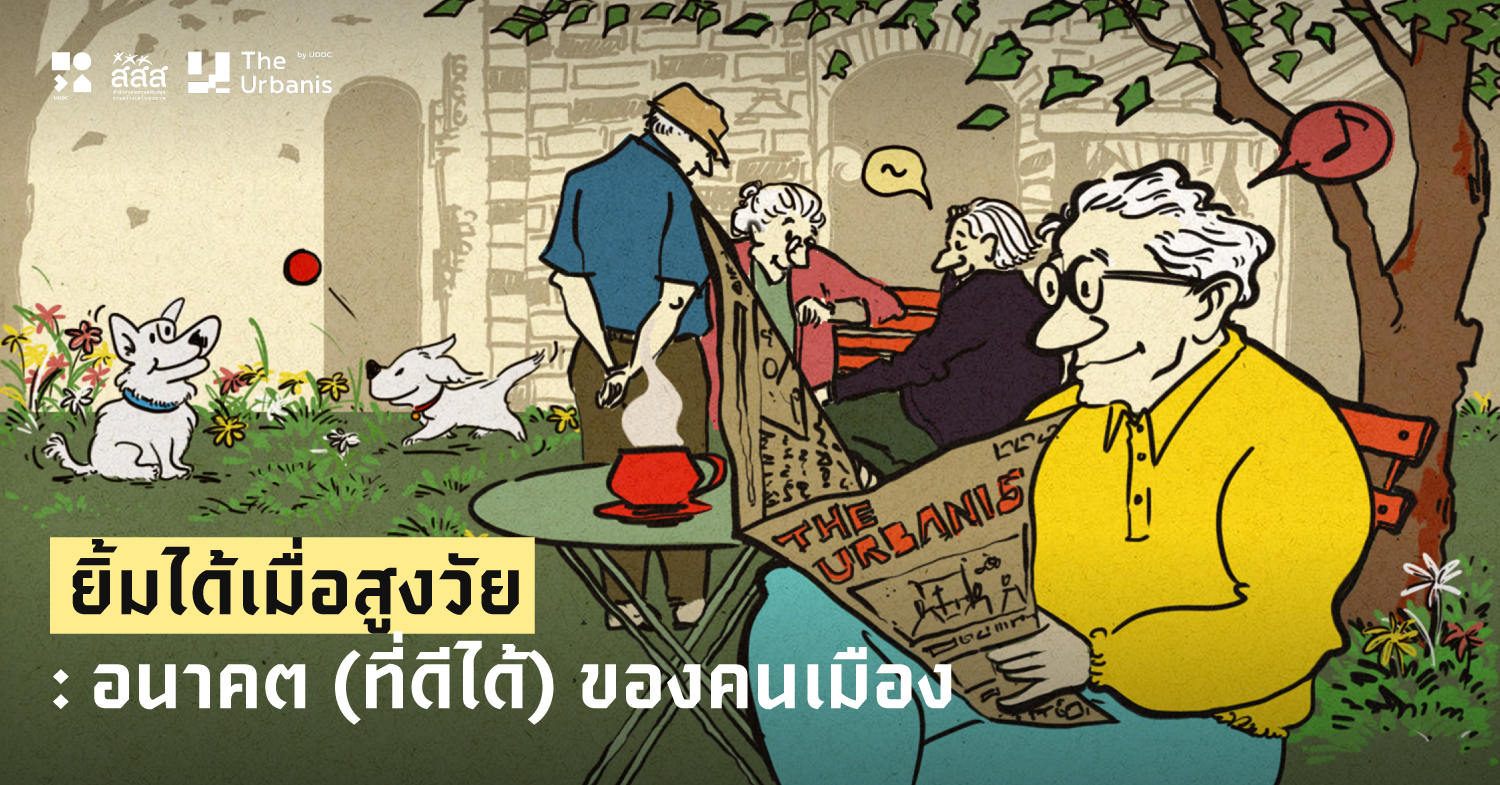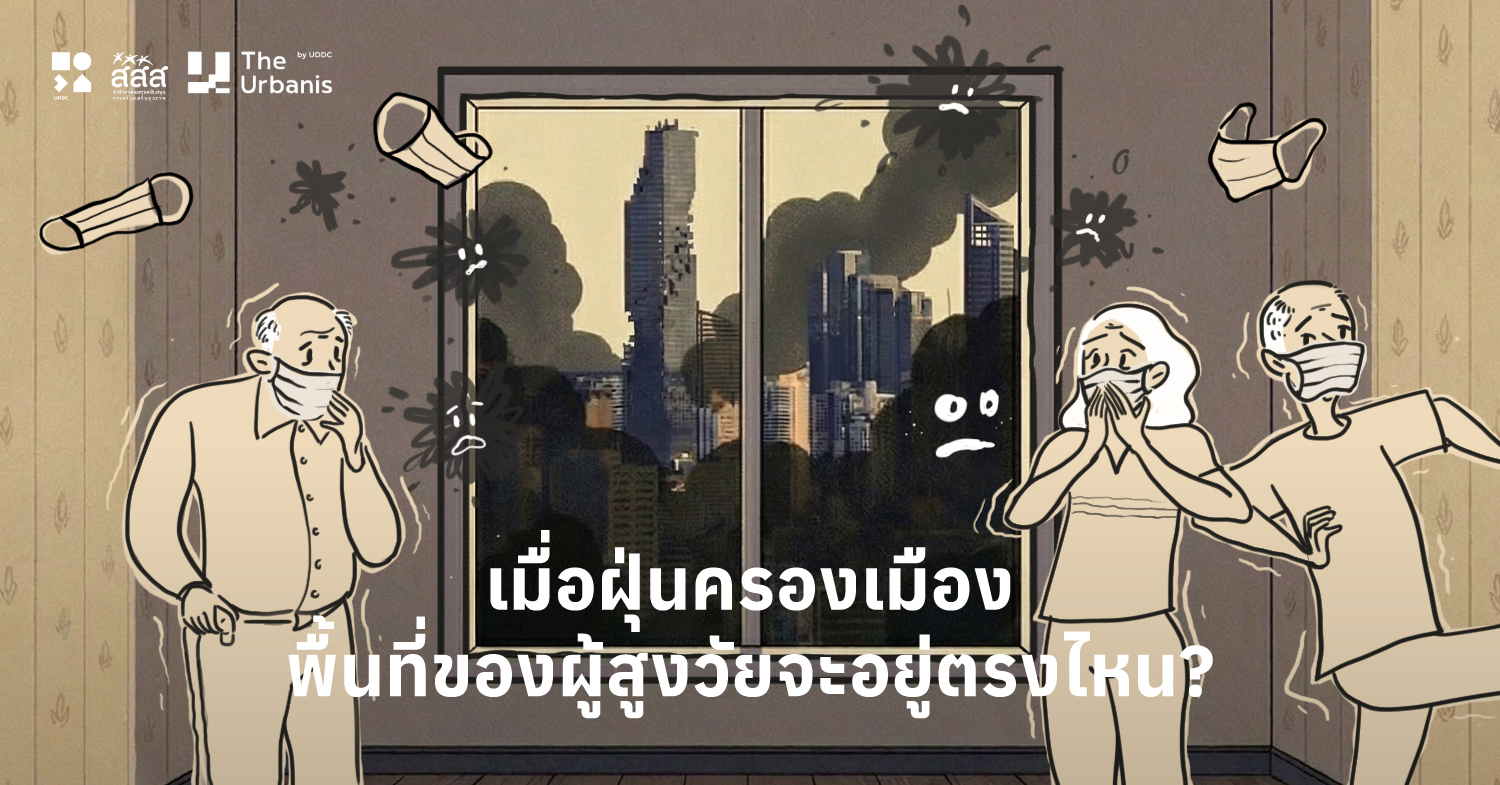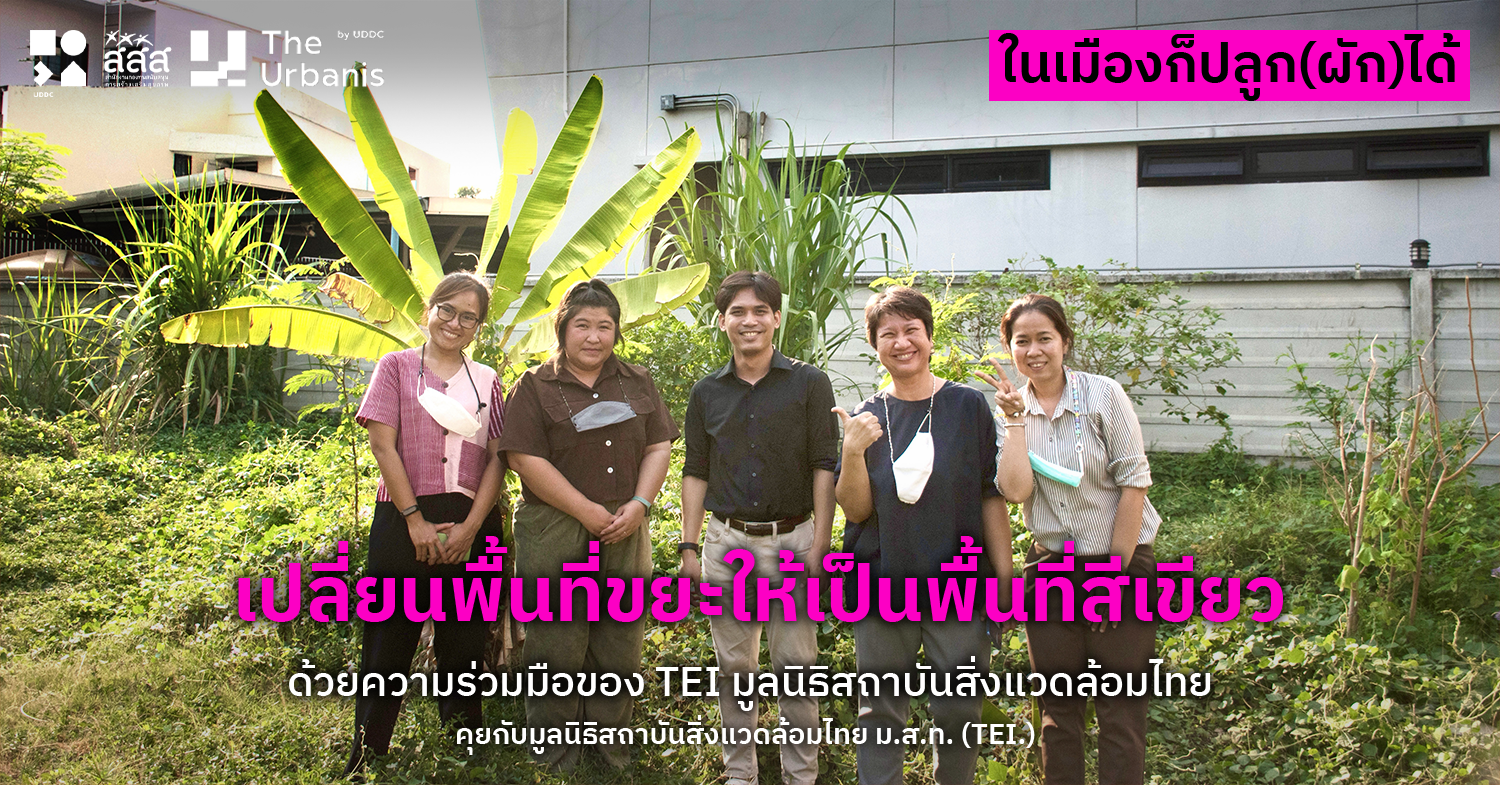16/09/2020
Environment
‘Chao Phraya Sky Park’: New hopes and possibilities for adding green to the city, connecting districts, linking communities, by promoting a high-value walking experience
รศ.ดร. นิรมล เสรีสกุล
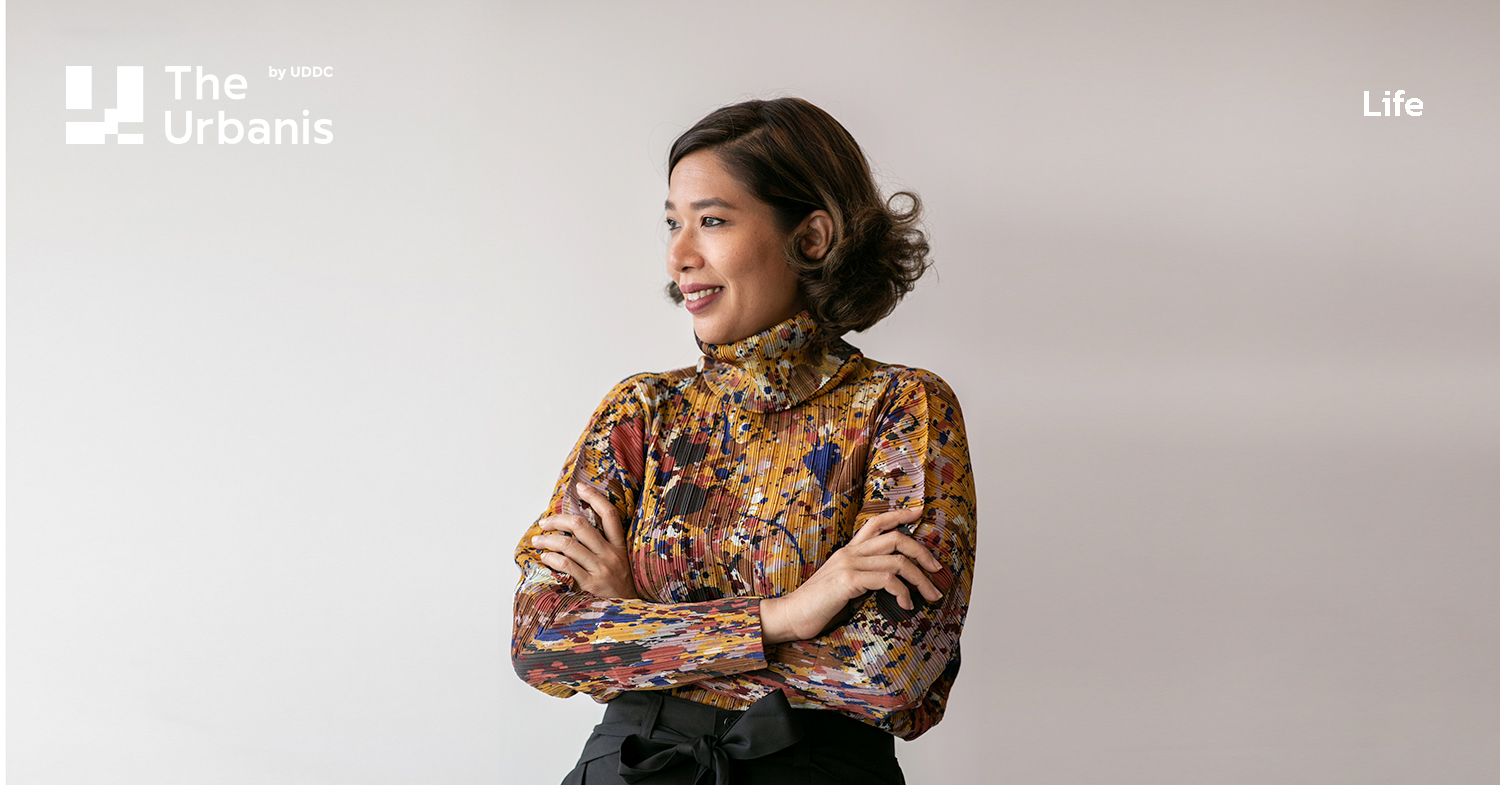
Translated from an interview transcript : Niramon Serisakul,Director of Urban Design and Development Center (UddC) and head of Chao Phraya Sky Park project
Full interview transcript https://theurbanis.com/public-realm/09/06/2020/2016
The path to the Sky Park
The Chao Phraya Sky Park was built upon a structure that had been abandoned for more than 30 years. At that time, Bangkok was excited about the prospect of having its first mass rail transit system, which was called the ‘Lavalin Skytrain.’ However, that dream was shattered when it became clear that many obstacles and complexities would prevent the Lavalin Skytrain from becoming a reality. Thus, the aborted project was epitomized by the abandoned section of construction, which bisects the two lanes of traffic on the King Prajadhipok Bridge which spans the Chao Phraya River next to Memorial Bridge. That eyesore was given the sarcastic slang name of “Saphan Duan” or, literally, the amputatee bridge.
During the development of the master plan for conservation and rehabilitation of the Kadeejeen-Khlongsan neighborhood (also a pilot project of the Bangkok 250 project, Mr. Pradit Huayhongtong, president of the Bubaram Community of Kadeejeen, asked Dr. Niramon the following question: “Why not make some use of Saphan Duan – it is just sitting there waiting to be developed!” This was sort of a “eureka moment” for the architects working on the Bangkok250 master plan. Those designers got to work immediately to create a vision of the regenerated bridge to be an opportunity to increase green area of Bangkok, while linking communities on both sides of the Chao Phraya River. All the synergies of such a redevelopment started to multiple in the minds of the urban designers, as they started to work out the details and potential. That catalyst to action was five years, and is now bearing fruit this year as the Sky Park.
In the words of Gen. Atsawin Khwanmuang, Bangkok governor, and Mr. Pradit, the community leader:
“The Bangkok Metropolitan Administration (BMA) is very supportive of this project. Both the management and the working group from the Department of City Planning and Urban Development, who worked together to advise us, all have the same opinion that this is a strategic project for the following three reasons:
- High Impact: This project will have immediate practical use by creating a smooth pedestrian and bicycle linkage of the Bangkok and Thonburi sides of the Chao Phraya River.
- High Visibility: People all around the part of the river will see a park floating in the sky, almost like a mirage. The Park will become an emblem in support of the policy to increase green public areas of Bangkok through efficient design and construction.
- Quick win: The project has reduced complexity of design to produce the most cost-effective solution to the adaptation of an abandoned city structure. This was made possible by a streamlined approach to management among just three key agencies: The BMA, the Expressway Authority of Thailand (EXAT), and the Department of Rural Roads. Importantly, the regeneration of Saphan Duan did not require any displacement or disruption of the surrounding communities, and construction was minimized.”
This project is the hope of urban renewal. The success of this project is due to the cooperation between the BMA with other stakeholder authorities in creating quality public space. Indeed, this is a kind of success that is rarely seen. The BMA had to work hard across both vertical and horizontal connections which is always a challenge of urban rehabilitation. This is especially true in the Thai context in which the central government structure is complex and fragmented. We often see the various centers of budget and power as organizations: the owner of the education budget as an organization; the owner of the construction budget as an organization, etc. But this project overcame the obstacles of compartmentalization by negotiating and collaborating. From now on, if anyone says that this type of project is too difficult to do, or is impossible, ask them to look at the Sky Park development. Niramon had had the opportunity to talk with many key staff of the BMA, and they all agreed that the successful completion of this project will give impetus to other projects to proceed, since they see the feasibility of achieving the desired outcome.
“If viewed from both the professional and academic perspectives, this project may not be large in size at only 280 meters in length and 8 meters in width. But, the project has outsized importance as a catalyst for new initiatives and opportunities for urban regeneration. Think about it: The Sky Park can change the way people look at public spaces, and leveraging government investment. Indeed, it can be said that this project is the first time that designers and developers have come together to repurpose abandoned structures to create modern uses. With minimal investment, the Sky Park as created a new path for walking or cycling instead of investing in a whole new overpass which would have cost many times more. In addition, the BMA gave full freedom to us designers to think expansively. The only restrictions were the engineering and driving safety standards of the Dept. of Rural Roads. Once the design was finished, the BMA had already prepared budget to invest in this redevelopment. I consider this to be an important milestone in the transformation of Bangkok. I, as an academic and someone of professional standing, have to thank the BMA, the Dept. of Rural Roads, and the EXAT once again for giving us this opportunity. ”
(Remarks by Asst. Prof. Dr. Niramon on the significance of the Sky Park project).
Limitations are challenges
“Before becoming the world’s first river-spanning Sky Park, the Chao Phraya Sky Park has overcome many restrictions. This is something that the design teams know too well, and how these obstacles can make the effort seem interminable. The challenge was not just reconfiguring the structure, or the integration of the greenery to make the design complete. Looking back at the evolution of the design, it was clear that such a sky park concept could not be the typical image of a lush pasture, with large shade trees, with birds chirping all around. Thus, it is understandable that when the public actually encounters the Sky Park, they may have doubts and questions.
Given the limitations of the bridge structure which could not be altered, there was a multiplicity of issues to consider at each step, from the beginning of the project. Those involved in the project had to participate in multiple rounds of public hearings, planning sessions with the stakeholder communities, and consultations with related agencies to get everyone on the same page. Only then could the designers receive the final green light to proceed.
One key limitation was the fact that large machinery could not be transported onto the bridge structure due to its age and weight tolerance. Plus, being an “amputated” bridge, the middle structure had no easy access up or down. Thus, material and equipment had to be disassembled into manageable parcels to be ferried up to the structure, and reassembled. It was like watching how ants transport a stash of sugar back to the nest. There had to be careful calculations on how much weight the bridge could take on and at which locations.
“When executives of the BMA presented the Sky Park design to the BMA Council for final approval, and received budget authorization, that was not yet the end to this saga of challenges. At first, no contractor submitted a bid for construction. The larger contractors may have felt that a project of this size was not worth it, especially given the unique challenges and numerous restrictions. Eventually however, after a second round of soliciting tenders, a suitable construction company was identified to implement the design.”
(Remarks by Asst. Prof. Dr. Niramon)
“Although the Duan Bridge structure was to be refurbished and fortified, the working area of 280 X 8 meters imposed considerable challenges for planning the design. Imagine managing to have to divide up that narrow space for pedestrians, cyclists, sitting spots, scenic spots, etc. This is how difficult it is to allocate space – especially when either side entails a drop of over 10 meters to the river below. “
“In a tropical city like Bangkok, we would like to have trees that provide a wide area of shade, densely planted to ensure full coverage of passers-by. The design team wanted to achieve that as well. However, given the weight-bearing limitation of the structure, the amount of soil and water to nourish large shade trees, and the ability to withstand high winds on the bridge, made this vision unrealistic. That restricted the options for the designers as to what trees and foliage could be planted. In fact, the Sky Park was designed to meet the main objective of promoting alternative transportation by foot and bicycle across the Chao Phraya River to connect Thonburi and Phra Nakorn Districts. The concept was also to provide a new panorama of the city’s riverfront, and an abundance of trees might obstruct the vista. Thus, large-tree shading was not a top priority in the design, but it is still an integral part of the project.
Another limitation was the recognition that maintenance of the Sky Park had to be simple and efficient. Therefore, flowers and plants that would require extensive care were excluded. In addition, the design and distribution of the foliage had to comply with driving safety standards, i.e., not obstructing the driver’s vision on opposite lanes of the King Prajadhipok Bridge on both sides. Therefore, the trees and foliage which might grow in ways that would impede driver vision or break and scatter in a tropical storm had to be excluded. Finally, even if it was feasible, this designers would not support, in principle, the transplanting of larger trees from the natural forest to populate an urban Sky Park.
The bridge is more than a bridge
The Chao Phraya Sky Park is, of course, the shape as a bridge. However, instead of macadam, the top is decorated with green areas. There are pathways that can be guaranteed to clearly benefit pedestrians and cyclists. But no motor vehicles are allowed, and the Park is free of stalled cars and bus stops. That said, anyone can use the area on the bridge to do a variety of activities. People can exercise, meet a friend on the other side of the river, or relax by watching the sunrise and sunset. The Sky Park provides a 360-degree panoramic view as if gazing at the sea — but is the dynamic beauty of the Chao Phraya River that one sees.
“The key challenges of the design were two-fold: One is urban mobility, and the second is the quality of life. These are the most basic issues in city design, and they are often at odds with each other. The Sky Park attempts to address both challenges in a single design by increasing alternatives for mobility by walking and cycling, while improving the quality of the experience by taking people through a green space. The Park is also a public area that allows people to sit and relax outside. “
Niramon feels that this Sky Park may be a prototype that uses idle space (e.g., an abandoned structure) to benefit the public good. Plus, the Sky Park is a prototype for the many derelict areas of the city that have been overlooked which can be repurposed as a new utility. That new role can be the blood vessels, lungs, and organs of the city.
“The BMA does not own land of the city, and does not having jurisdiction over many parts of Bangkok. We therefore proposed a strategy called “urban acupuncture: to do very little, but do it at a strategic location.” This approach also minimizes the impact on surrounding locations and neighborhoods. That facilitates the task for the BMA to negotiate changes. Just as with acupuncture, the needle can free up a section where blood flow is restrained, and other systems will be freed up and working more smoothly. It is not expensive, and does not harm anyone. “
“When the Sky Park is fully operational, it will be the gateway to more than 100 places of worships, sites of cultural heritage, and other tourist attractions on both the Thonburi and Bangkok sides, This area comprises dozens of communities, and more than 20 schools. All will be benefit from the connections the Sky Parkprovides in myriad ways.”
(Remarks by Niramon on the benefit of the Sky Park for the public)
The future is sustainability
The Chao Phraya Sky Park is an image of the future that can become a model for the regeneration of many abandoned buildings and structures in Bangkok to help beautify the city while making more practical use of limited space and facilities. This is also a model that will create more green areas in the city. It is a prototype that gives the city more options for urban mobility and a model that will be extended to various projects that are going to happen in the future to boost quality of life in every way.
The Chao Phraya Sky Park is like a message which spells out the necessity of green spaces in the city Aside from the public being able to use it for practical, everyday purposes, the Sky Park is also a green symbol that serves to connect the public parks on both sides of the river. This prototype can be a source of inspiration for accelerating the greening and functionality of Bangkok.
The advent of the sky park also makes it possible to see the potential for renovating existing places to better serve people. For example, the ‘Green Bridge’ project will introduce an elevated walkway and bicycle structure connecting Lumphini and Benjakiti Parks. (The partner of this project is Studio Tai Co., Ltd. and Lighting Research and Innovation Center, King Mongkut’s University of Technology, Thonburi). This bridge has been in use for over 20 years, but is in disrepair. There are many problems that hinder use of the walkway. Plus, the path discourages use because of exposure to the heat. At night, there is insufficient lighting which might deter users who fear crime. Finally, the area is still disconnected from the city, causing the Green Bridge to be quite difficult to access.
Today, the Green Bridge is about to bloom as its name suggests. The bridge will become another green area that will connect parks, neighborhoods, and communities. This approach to design is to help public spaces to be used more efficiently, make the city more mobile, and improve access to quality public areas.
“According to the UddC Urban Intelligence Unit, the average distance from any point to the nearest park in Bangkok is 4.5 kilometers, which is considered too far to walk. (Compare this with Paris, where access to the green area averages 10 minutes, or about 1 kilometer, and that has been the case since the 19th Century). The strategy that UddC proposes is urban acupuncture: Add pieces of green space to create interlinking jigsaws such as Sky Park, Green Bridges, or improvements under expressways. Taken as a whole, these small projects will be able to significantly reduce the average distance to access Bangkok’s green areas.”
“One of the key policies of the BMA is to increase green space in the city from the current 5-6 square meters per person, to 9 square meters per person (as recommended by WHO). In addition to the importance of urban health, a greener environment is also an important part of enhancing the brand for the city. The government wants to attract the world’s leading companies to invest in Bangkok and other leading cities of Thailand. However, if these potential investors see on limited green area, they will be concerned about the quality of air and the quality of life in a time when people are more eco-conscious. In other words, a poor urban environment reduces investment attractiveness. “
(Remarks Niramon describing the importance of creating green spaces in the city)
“If city people can move around more by walking, there will be more bridges and pathways to connect districts and communities. That will help improve pedestrian health, reduce automobile usage, and reduce non-renewable energy consumption Therefore, the more you walk instead of travel by motor vehicle, cities can reduce carbon emissions and reduce the problem of PM 2.5 dust originating from those vehicles.”
Niramon recounted that UddC’s Urban Intelligence unit conducted a study which found that the Sky Park would double access points by foot in the Rattanakosin-Thonburi area (from 49% to 76%). What is more, for many people the Sky Park will make it is easier for people to reach their destination, whether that is a school, work place, a transit point, or many other objectives.
“When there is an interconnected network with pedestrian access, that means that the opportunities for interaction and visitation will also increase accordingly. It can be expected that tourists will visit the community since they are usually in no rush to get from point A to point B. We can shown them how good the city can be – how to free oneself from dependence on motor – and how much cleaner the air can be.”
“If we ride bicycles from the from Kadeejeen-Khlongsan area Cross the Chao Phraya River, (as a caravan) through the Sky Park, then onto the gate of the Osathanon Bridge, along the canal behind the Constitutional Court, penetrating into Pahurat, we will be able to reach the Chinatown area (Charoen Krung Road) within 15 minutes. If walking, then that route may take 30 minutes. In the past, one would have to take many different buses to complete such a trip. Our vision should be of the “15-Minute City,” such as the policy of the mayor of Paris that allows people to reach their destination within 15 minutes by walking, cycling, or mass transit. Bangkok can aspire to be such a quick-trip city – we just need to persevere and replicate what has already been accomplished.”
“Finally, what we have done is to restructure the city to create connections between communities, houses, shops, fresh markets, and religious places via footpaths, bicycles, and green roads. The groundwork has been laid in an area of high significance in Bangkok. The Sky Park is located strategically at the tip of the ring of Rattanakosin Island. We would like to express our utmost gratitude, once again, to the BMA, the Dept. of Rural Roads, and EXAT for their support. This project is inspiring hopes and dreams of new possibilities for the city in our lifetime.”
(Niramon concluded with remarks on the success of the Sky Park project)
CHAO PHRAYA SKYPARK FUN FACTS
1. Is the Chao Phraya Sky Park the first sky park in the world?
The idea of building a sky park over the river has been a dream of architects from the 19th century, and that dream is still being pursued to the present day, such as Garden Bridge (London), Pier 55 (New York), and The 11th Street (Washington DC). The Thai Sky Park is a strategic project of the Bangkok250 Project which began implementation in 2015. The Sky Park was successfully completed in 2020 as “The world’s first sky park over the river.” The Thai Sky Park used considerably less budget than similar projects, such as the planned Garden Bridge in London which is 85 times more expensive to build. The Sky Park was cost-effective since it ‘piggy-backed’ on an abandoned structure of the city. Most importantly, the project was carried out without affecting the original community. The Sky Park has increased the green area of the city by planting trees on the bridge itself to enhance the city environment.
2. What is the origin of the Chao Phraya Sky Park Project?
The Chao Phraya Sky Park was conceived for the development of public areas and promotion of ‘green traffic.’ The project focuses on walking and biking across the river by regenerating the Lavalin sky train track structure which was abandoned over 30 years ago. Locals had dubbed the structure as the “Saphan Duan”, the amputatee bridge. The Chao Phraya Sky Park is a strategic project of the Bangkok250 Project in which the Bangkok Metropolitan Administration joined forces with the Expressway Authority of Thailand, the Department of Rural Roads, the Harbors Department, and the Ministry of Transport to advocate for the project. The Sky Park has the benefit of connecting the traffic network by foot and bicycle, creating a new vista of the city’s riverfront, while improving convenience and quality of life for visitors and residents alike. The Sky Park encourages cultural tourism in the historic neighborhoods on both banks of the Chao Phraya River in Phra Nakhon and Thonburi Districts.
3. Interesting features of the Chao Phraya Sky Park
• 280 x 8.5 x 9 is the length x width x height of the Sky Park (meters)
• 22,400 is the total utility space (square meters)
• 200 is the number of tourist attractions, cultural heritage sites, religious places, and educational amenities around the project
• 26 is the number of schools on the Bangkok and Thonburi sides which students can access by foot or bicycle using the Sky Park bridge
• 76 is the ‘WalkScore’ value which increased from the previous 49 after the Sky Park was complete (out of 100 points)
• 15 is the amount of carbon dioxide reduction — that is because Sky Park bridge can reduce care usage (percentage)
• 172 is the number of trees planted in the project area
• 0 is the number of trees in the project area that were felled from the original forest
4. Planning design team
• Urban Design and Development Center, Chulalongkorn University – Center of Excellence in Urban Strategies (UddC-CEUS)
• Land Process Company Limited
• N7 A Company Limited
PLANT THE BRIDGE
June 11, 2020
This is an invitation to partners from residences, temples, schools, and government offices around the Sky Park as well as the general public to help raise funds and plant trees in the Sky Park. The goal is to create a park that is “Greener than design standards” as a contribution to the green areas of Bangkok that everyone has a stake in protecting.
Host
Bangkok Metropolitan Administration (BMA) / Department of City Planning of the BMA / Phra Nakhon District Office / Khlong San District Office / Phrarachawang Police Station/ Expressway Authority of Thailand / Department of Rural Roads
Working group
Urban Design and Development Center, Chulalongkorn University – Center of Excellence in Urban Strategies (UddC-CEUS) / Land Process Company Limited / N7A Company Limited / KMUTT Lighting Research and Innovation Center (LRIC) / Graphic 49 Company Limited / Thai Urban Designers Association (TUDA) / 19th Landscape Company Limited / The Cloud
Main sponsor
Prayun Wongsawas Worawihan Temple / Chakkraphong Villa / River Books Publishing / Siam Piwat Company Limited / TCP Group / 19th Landscape Company Limited / V-F Lighting Company Limited / Lighting and Equipment Public Company Limited
Individual sponsors
Khunying Isariyaphan Panjamanon, President of the Lion Apipirom Club Association / Ms. Suchada Charoenpiphop, Lion Apipomrom Club / Mr Pekphon Chok-Anayabut and Fan Club / Supot Chaiwatsirikul ICONSIAM/ Thatri Likantpichitkul ICONSIAM, Asst. Prof. Rajayuth Supsuk, Faculty of Architecture, Chulalongkorn and Family Museum, Gudi Chinese House, Chinese Gudi Community, Kadeejeen Area / Assoc. Prof. Dr. Panit Bhuchinda, Department of Regional and Chulalongkorn Department of Planning and Mr Sakakphat Anurak, Paradorn Healthy City Lab / Asst. Dr. Niramon Serisakul and Family / Professor J.BOURGON National Scientific Research Center France / Teacher Wan Chantawilaswong Department of Regional and Urban Planning, Chulalongkorn University / Asst. Prof. Dr. Chanya Pornchuleamrara, Faculty of Architecture King Mongkut’s University of Technology Thonburi nd the Lighting Research and Innovation Center (LRIC) / Mr. Chinaporn Meechaya, alumni of the Department of Regional and Urban Planning, Chulalongkorn University and the Asian Disaster Preparedness Center (ADPC) / Assumption alumni ‘89 (Louis Farewell), Admiral Prapitiporn Aksornmat, Sirasongwit Jirathanaphokin, Pakayasak Sawaddi Singh, Sumet Kongpattanakun and wife, Montri Kriangwattana, Khun Chutima Tansarudi and Wanlop Tarnruedi / Mr Bilb Sanitwong Na Ayuthaya / Mr Chavat Chueta / Mr Thanakon Junchaya / Mr Niphon Cheepchon / Khun Kusol Yam Sa-ard / Mr Thanarat Ubonchai / Mr Methi Nawarat / Somchai Kulimakin / Khun Boon Sri Kulimakin / Khun Chukrit Choota / Khun Wannee Boonyasiriwat / Khun Phatharin Chirathitiwanich / Pichada Punnamakun / Alumni of the Faculty of Architecture Chulalongkorn University, ‘Stu76, Mr Thanawat On Jek, Sipa Ingkhaphakorn, Visasaya Thongthong, Suthiphong Butsabong, Mr. Prichaya Nawarat, and Khun Voranan Thongyoo / Alumni of the Faculty of Communication Arts Chulalongkorn University, Class 45, Khun Chayakorn Kamchok, Khun Amrada Rientrakul, Mrs. Phachaphon Phakkhasatien, Sirichai Leerlertyuth, Pimpan Laohabutr, Natchaphak Komolchoktawee, Khun Wasathorn Pi Yarom, Khun Nichato Soonrapun, Pornprom Likitkositkun and Ms. Pantita Chuchamangwong / Mr Wilaiwan Techapapaiboon / Ms Suchat, Miss Lalana and Miss Naphapat Jullasup
